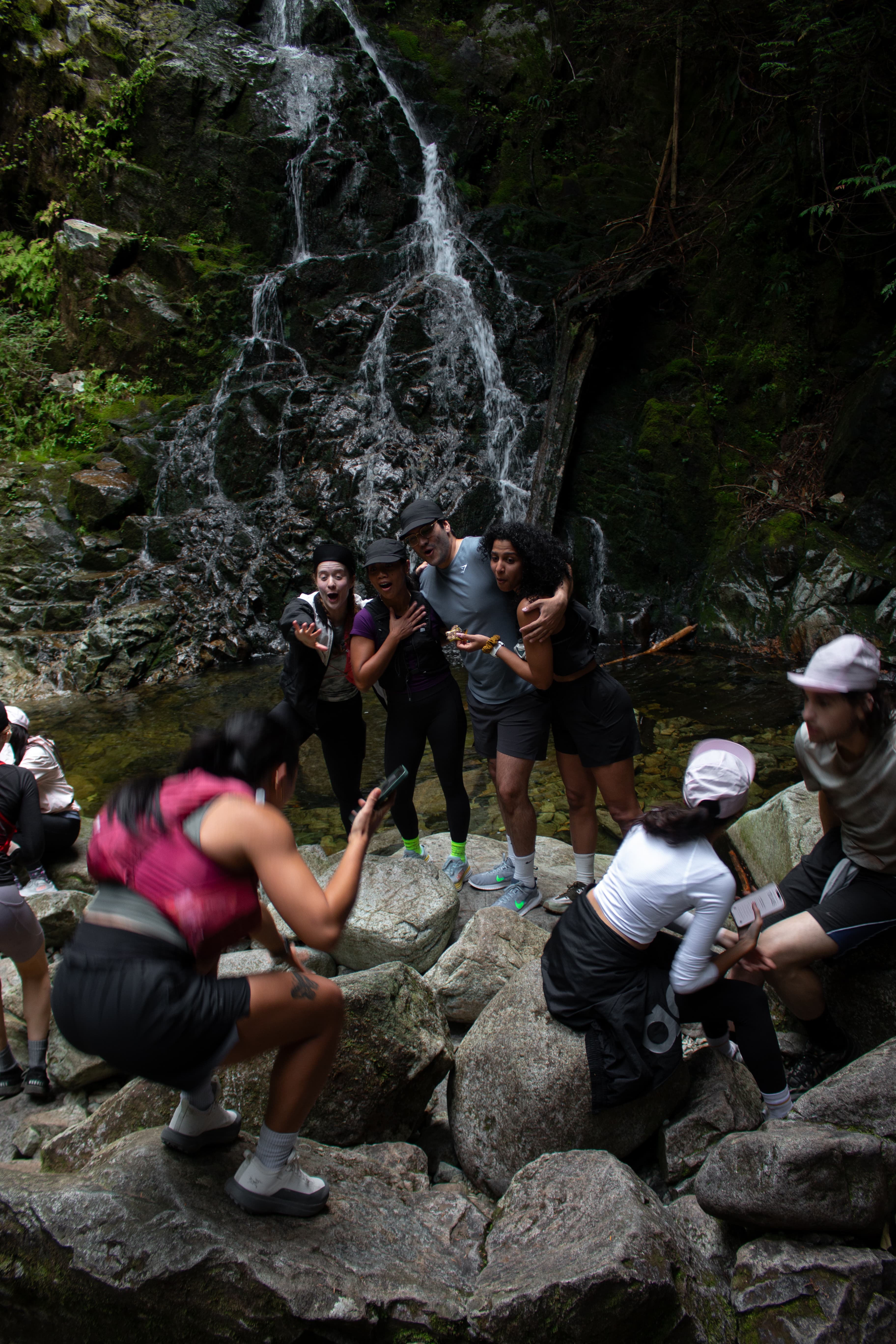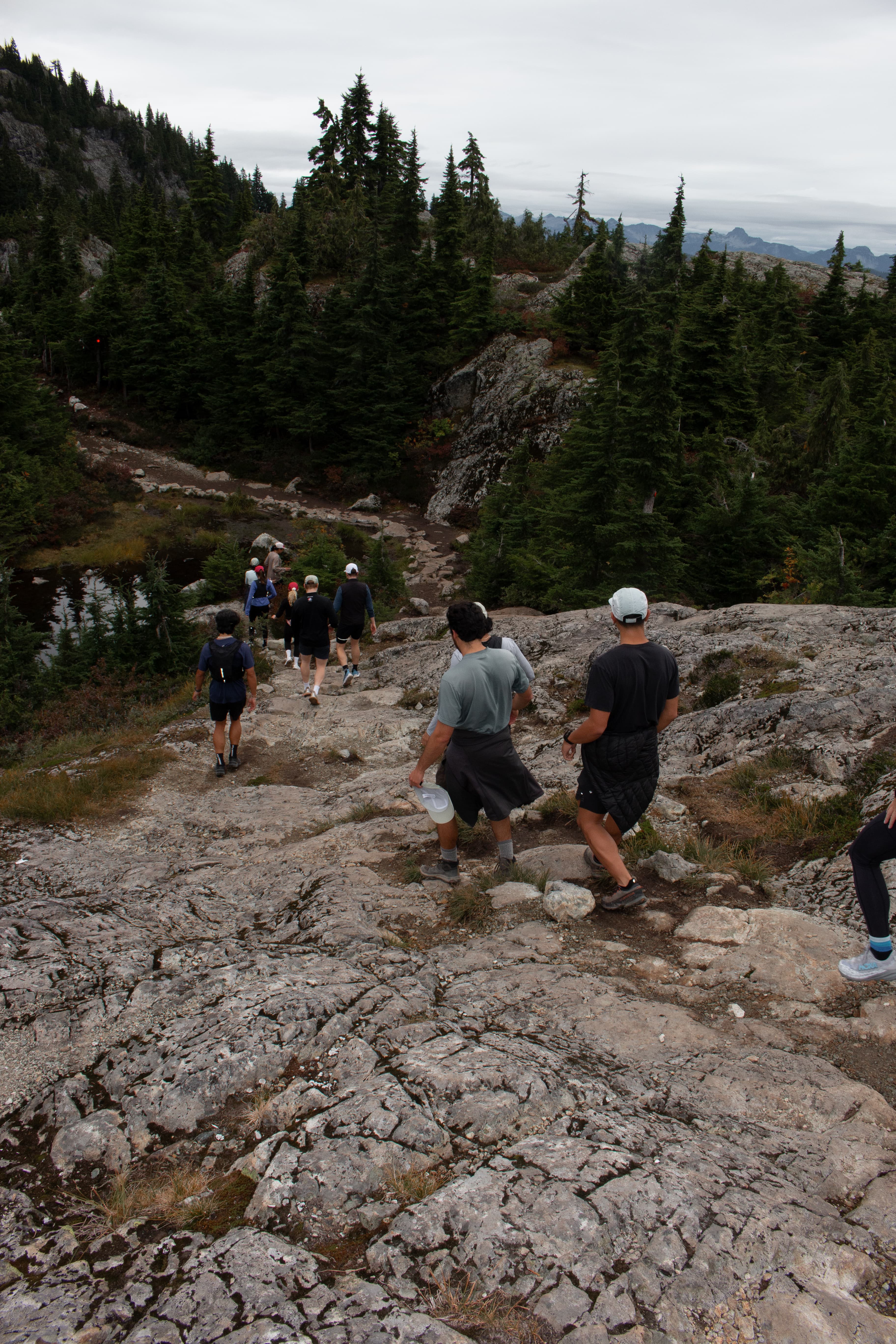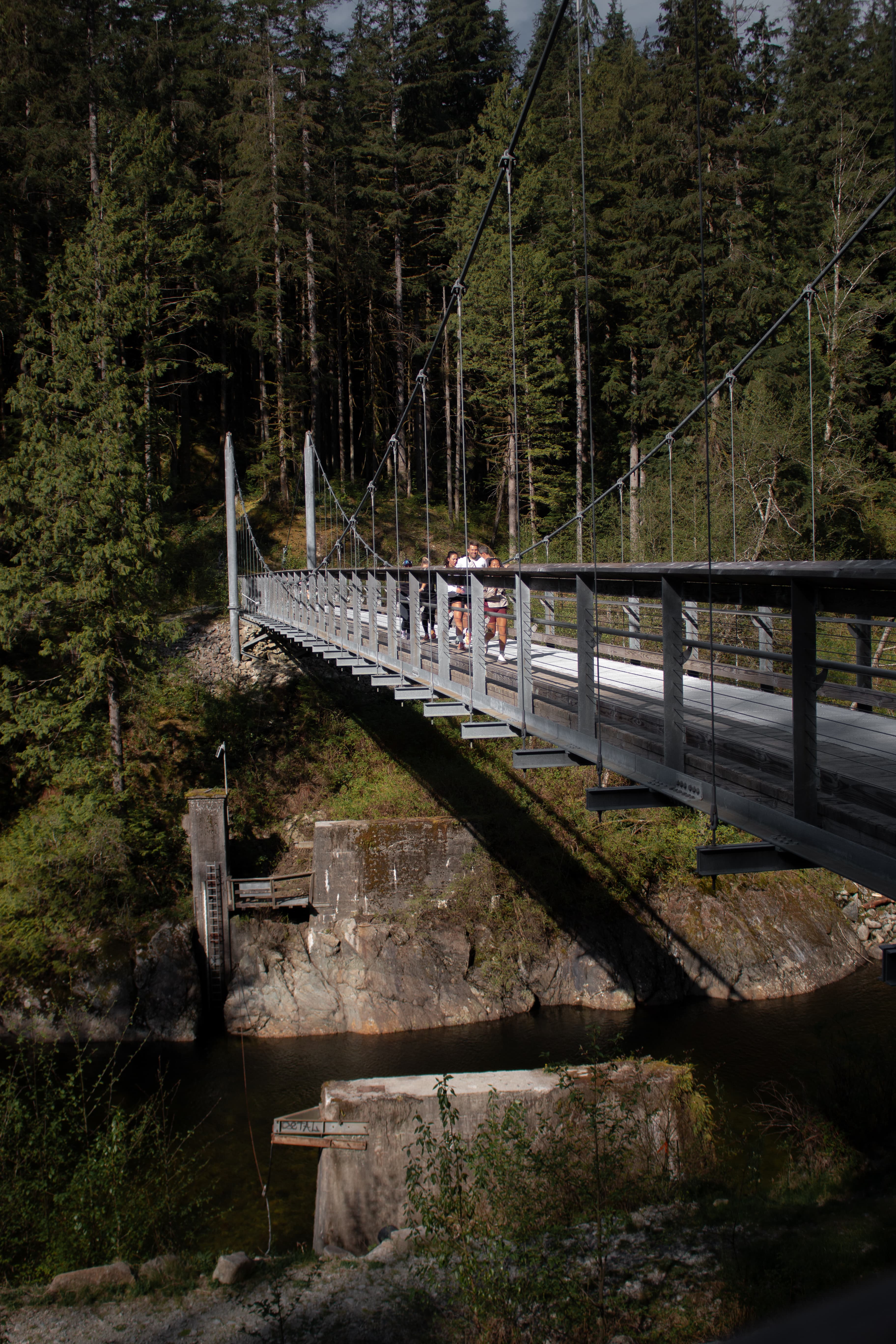Run better and hit your goals. Use your physio coverage before it resets. START NOW
Beyond the Trail
A conversation with Path to Play co-founders Frankie and Charissa, on how they're breaking down barriers and building confidence on the trails
Interview by: Michael Bercasio
Photos provided by: Path to Play
Photos provided by: Path to Play
Path to Play began with a simple idea: make the trails feel less intimidating and more inviting. For Frankie, that idea came to life when she arrived in Vancouver searching for a community. She found it in movement. Yoga first. Trail running next. A mentor at Colour the Trails opened the door, and soon the trails became a place of freedom, expression, and belonging.
Charissa came from another path. Years of pressure, injuries, and recovery. She rebuilt her relationship with movement through education and coaching. What she wanted most was a space where every person could feel strong enough to show up as they are.
The two met in a café. Ideas turned into a program. Routes that progress through play, terrain, elevation, and distance. Workshops that help people feel capable on the trails. And they called it Path to Play.
Now, that work is extending through a Trail Scholarship in collaboration with RunReady and support from Nike Running. We spoke with Frankie and Charissa about what they’ve built, and what belonging on the trails can mean.
What is Path to Play, and what made you want to create it?
Charissa: Path to Play is a trail running program designed to create equitable access to the trails for beginners. We provide carpooling, mentorship, and an inclusive space where everyone feels welcome.
I want there to be a space where every body is celebrated, and to feel at home in our bodies and supported by community. Path to Play was created for others to find joy in movement and to feel you belong on the trails.
Frankie: I used to compete in sports, but my body could not sustain that. So I shifted into movement for wellness: mind, self, community, and safety. For me it is not about chasing a goal but about expression, freedom, and feeling alive in nature.
I want there to be a space where every body is celebrated, and to feel at home in our bodies and supported by community. Path to Play was created for others to find joy in movement and to feel you belong on the trails.
Frankie: I used to compete in sports, but my body could not sustain that. So I shifted into movement for wellness: mind, self, community, and safety. For me it is not about chasing a goal but about expression, freedom, and feeling alive in nature.
What felt off about the trail running world when you were getting into it?
Frankie: I was lucky to have learned about trail running through a mentorship. But when I wanted to progress, I came across "ultrarunners" and that felt really intimidating. Ultrarunning feels unattainable to me but I know that is the expected progression of trail runners. I guess it feels off that we normalize that as a goal.
Charissa: There wasn't one thing that felt off, but I heard people say, "But I'm not a trail runner", "But I can't run uphill", "What pace will it be, I'm worried I won't keep up", "I want to, but I am afraid of tripping and embarrassing myself". I didn't want trail running to be another space where someone felt unwelcome if they weren't running a certain speed, didn't have all the gear, or weren't doing the steepest trails.
Charissa: There wasn't one thing that felt off, but I heard people say, "But I'm not a trail runner", "But I can't run uphill", "What pace will it be, I'm worried I won't keep up", "I want to, but I am afraid of tripping and embarrassing myself". I didn't want trail running to be another space where someone felt unwelcome if they weren't running a certain speed, didn't have all the gear, or weren't doing the steepest trails.
"I didn't want trail running to be another space where someone felt unwelcome if they weren't running a certain speed, didn't have all the gear, or weren't doing the steepest trails."
How do you design your events and runs to feel welcoming for people who might not usually see themselves in trail running?
Frankie: What Path to Play is today isn't what it was when it started. It's a lot of trial and error and open feedback from our community. We were at an event once, and when we shared what Path to Play was, a journalist said: "Oh wow. Two women of colour leading a trail run organization. That's not common." That really opened our eyes to the opportunity we had to make a difference. We are the representation missing in this sport. So we made changes slowly and intentionally, catering to both women, non-binary, and marginalized genders, as well as BIPOC folk.
Charissa: The way we design (the experience) was inspired by the barriers that once kept us out of sports. We asked: if someone isn't on the trails, why might that be? We organize carpooling. Events are by donation and free for Indigenous participants. We offer both a walk group and a run group. We cap groups at fifteen and pair participants with a lead and a sweep. We move at a group pace. We run Lift & Learn workshops on strength and practical skills
Charissa: The way we design (the experience) was inspired by the barriers that once kept us out of sports. We asked: if someone isn't on the trails, why might that be? We organize carpooling. Events are by donation and free for Indigenous participants. We offer both a walk group and a run group. We cap groups at fifteen and pair participants with a lead and a sweep. We move at a group pace. We run Lift & Learn workshops on strength and practical skills
Where do you see the connection between Path to Play and RunReady? Why was that important to you?
Frankie: I've spent most of my life using physiotherapy. I think I started when I was twelve or thirteen because I had pain in my joints from running and basketball. I also come from a single-parent household, so I know firsthand how costly it is to engage in rehabilitation and strengthening. RunReady offers something unique with a custom movement assessment designed to find your strengths and weaknesses. For new runners, they could benefit so much from the knowledge of what their body needs.
Charissa: Our shared value is empowerment through education and movement longevity. I see RunReady as the missing piece, not only providing personalized support for runners to run stronger for longer, but also building overall body awareness and connection through individualized assessment and programs.
Charissa: Our shared value is empowerment through education and movement longevity. I see RunReady as the missing piece, not only providing personalized support for runners to run stronger for longer, but also building overall body awareness and connection through individualized assessment and programs.
With the Trail Scholarship including gear by Nike Running, RunReady physio-led assessments, and long-term guidance, if access is not the barrier anymore, what do you hope people actually get to enjoy?
Frankie: I hope they discover new parts of themselves. Even if they do not fall in love with trail running, they can look back and say, "I tried that," and feel proud. I hope they find connection with themselves, and lots of "wow" moments in nature, because nature is pretty rad.
"I hope (with this scholarship) they find connection with themselves, and lots of "wow" moments in nature."
What can scholarship recipients expect to walk away with, physically, mentally, or emotionally?
Charissa: Physically, they feel stronger and free of pain, with the body awareness to identify their daily capacity, respect limits, and build consistency through strength, mobility, and rest. Mentally, they feel confident navigating the trails with curiosity. They have a starter set of tools and know who to contact when they want to learn more. Emotionally, they feel at home in their bodies and excited to see where they, and their bodies, can go.
Why does it matter to you that more people feel like they belong out here?
Frankie: I am from Seychelles, a small island with only about 121,000 Seychellois people worldwide. I spent too much of my life walking into spaces and thinking: "Oh, I'm the only person who looks different." I want to change that. For women and people of colour for generations to come. I want my goddaughter or my best friend's daughter to envision any kind of lifestyle for themselves. And to do that, they have to see representation in all spaces.
Charissa: I grew up in a small Ontario town where I was often the only Asian kid. The media I consumed rarely showed Asian women beyond narrow stereotypes, and childhood trauma left me feeling like a misfit. Movement — running, cycling, lifting, surfing, volleyball — became spaces where I reclaimed autonomy, confidence, and joy in being in my body. Across every space, I've learned the same truth: people long to feel seen, to feel enough, to contribute their strengths, and to belong. Belonging should never be conditional. Everyone deserves to feel at home in these spaces.
Charissa: I grew up in a small Ontario town where I was often the only Asian kid. The media I consumed rarely showed Asian women beyond narrow stereotypes, and childhood trauma left me feeling like a misfit. Movement — running, cycling, lifting, surfing, volleyball — became spaces where I reclaimed autonomy, confidence, and joy in being in my body. Across every space, I've learned the same truth: people long to feel seen, to feel enough, to contribute their strengths, and to belong. Belonging should never be conditional. Everyone deserves to feel at home in these spaces.
The Trail Scholarship with Path to Play is now open until October 21
Apply Now




Learn More
Flagship Studio

